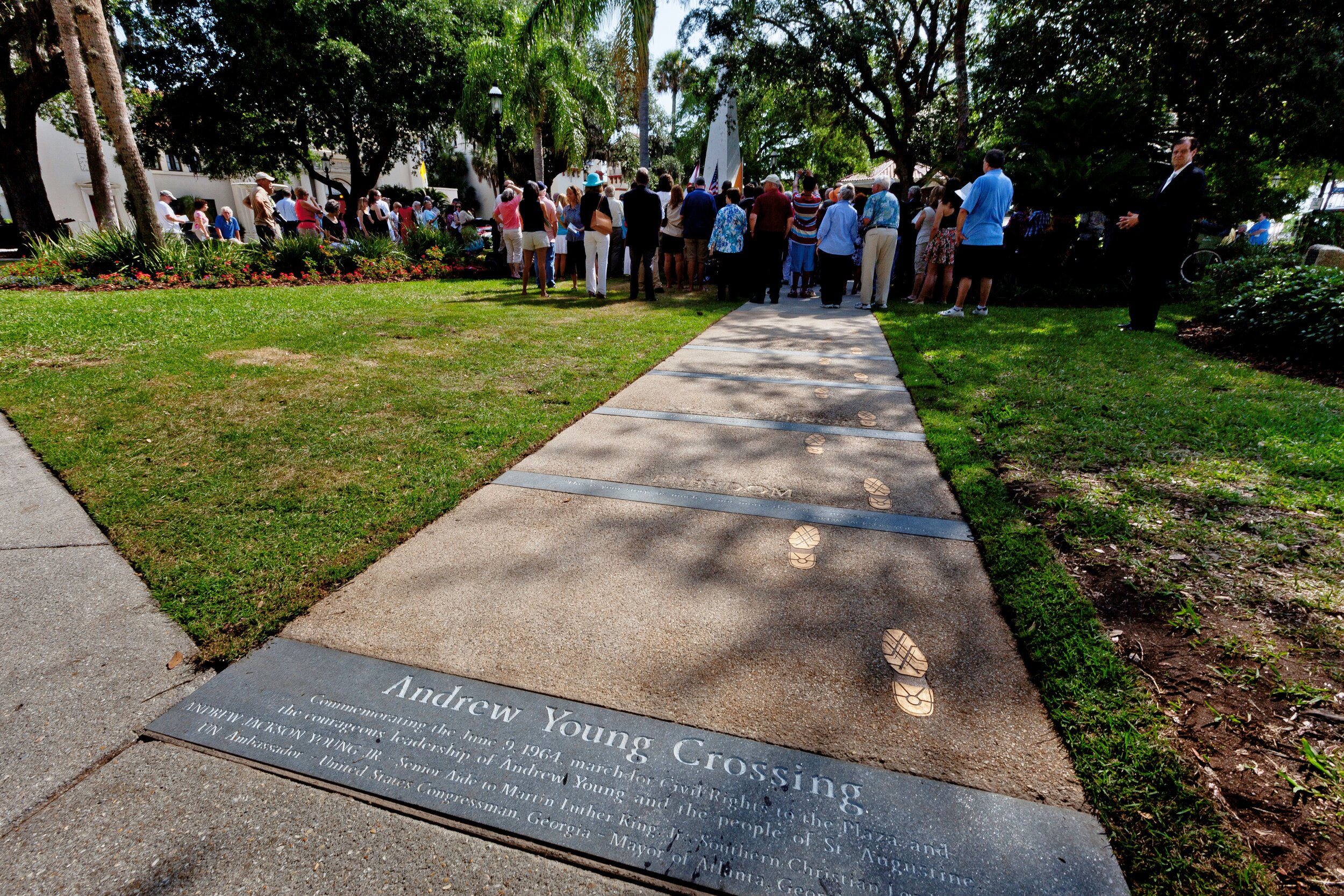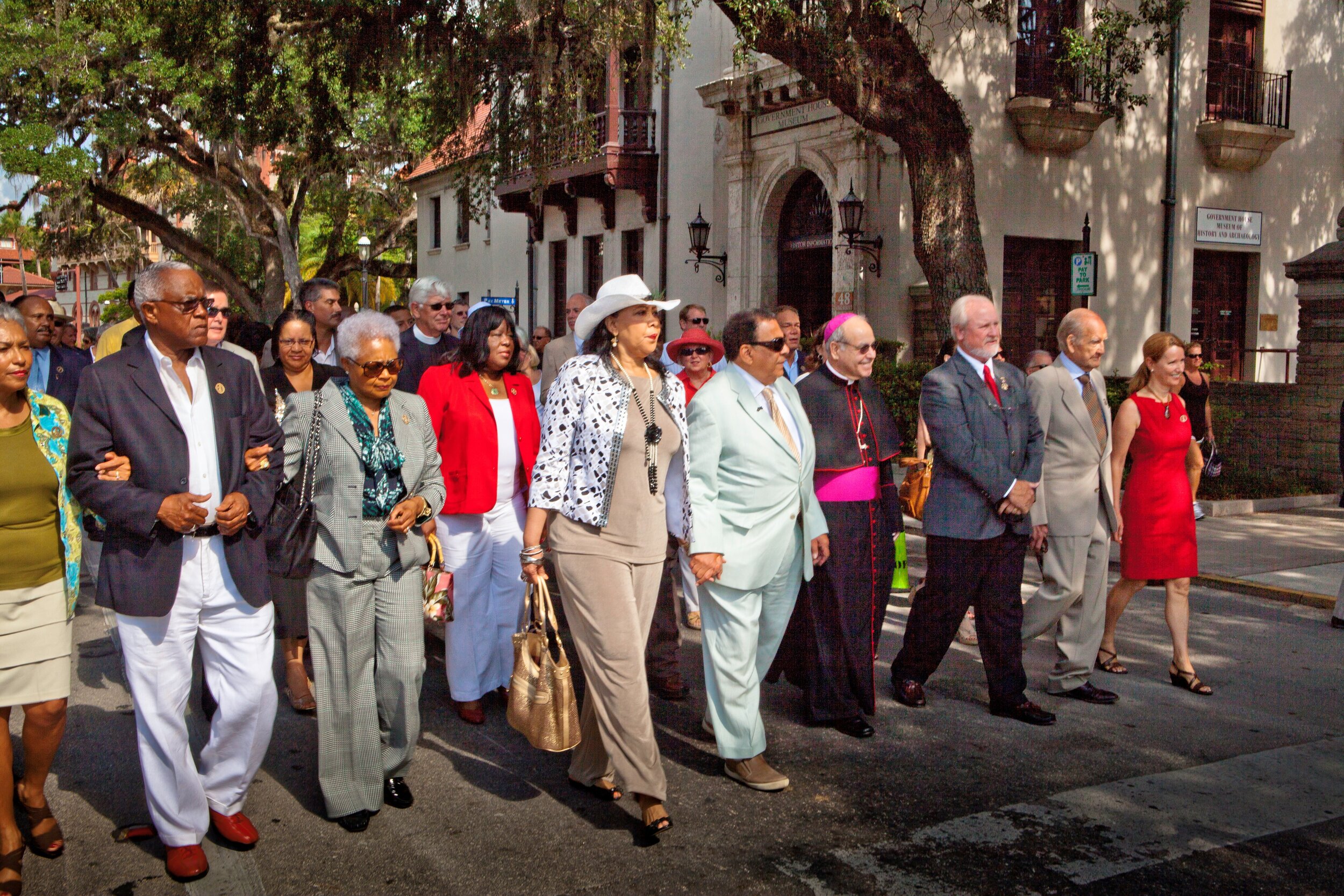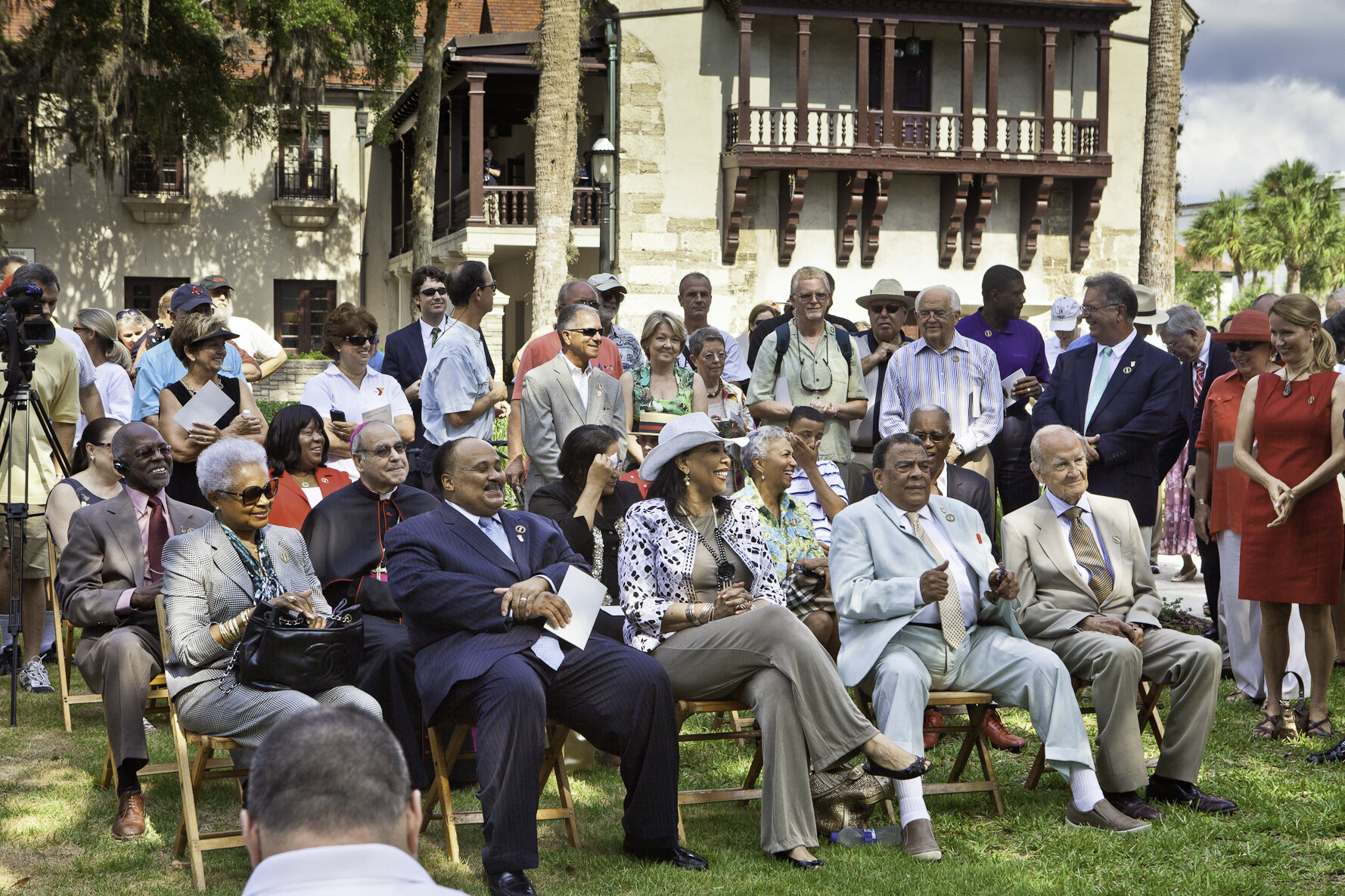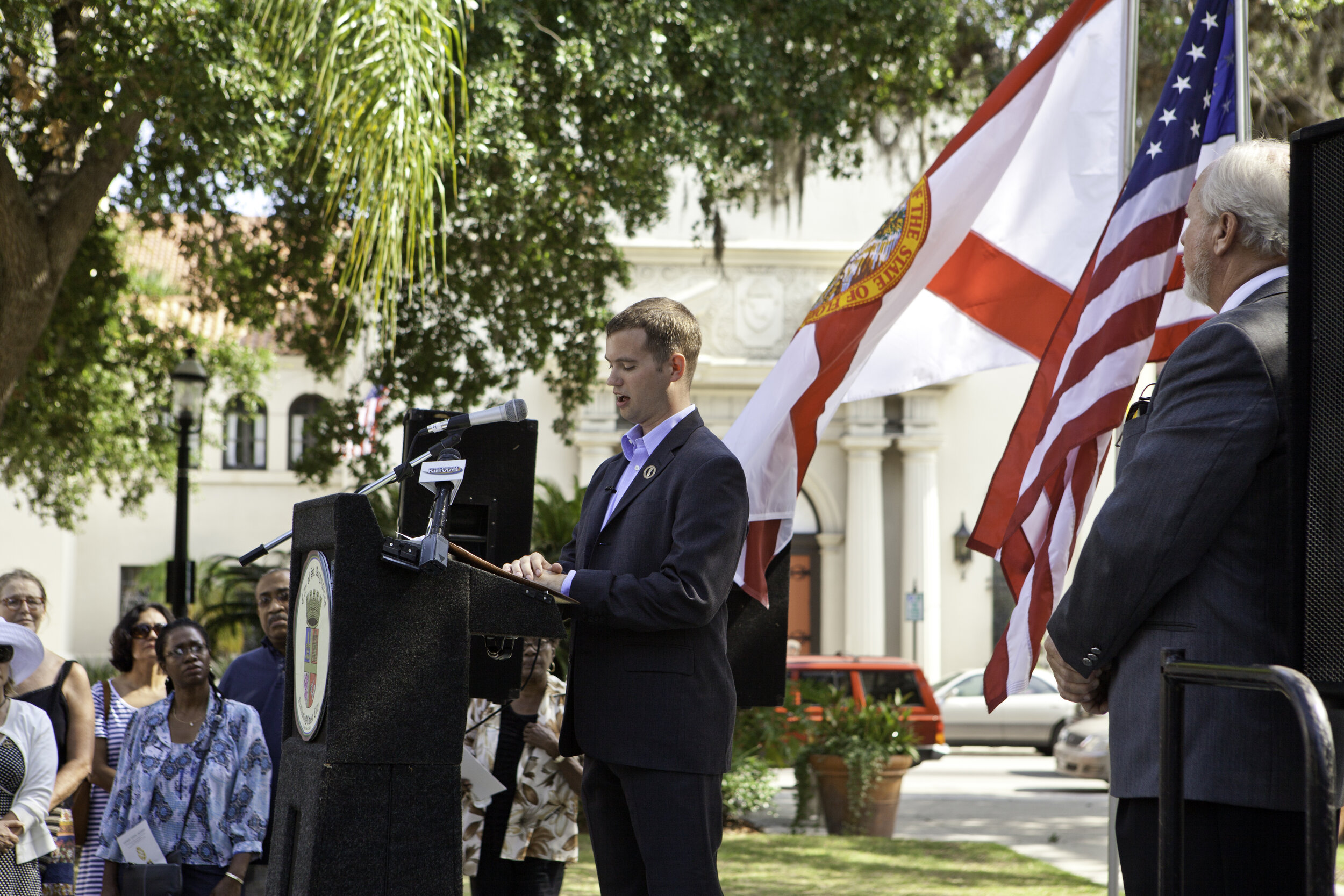Making a Monument: Andrew Young Crossing
Acknowledging All of Our History
In the summer of June 1964, the Civil Rights Act was lagging in the US Senate, and the Southern Christian Leadership Conference was working diligently to maintain civility in the unrest across the South. Martin Luther King, Jr., along with his senior aide Andrew Young, were concerned that any violence would be used by Southern politicians as reason to defeat the bill.
King sent Young to a sleepy town in Florida, St. Augustine, to quell the demonstrations that could bring undue violence to the cause. Instead, Young was challenged by the African American residents of St. Augustine to lead the peaceful march around the central plaza, the Plaza de la Constitución, with the Old Slave Market sitting on the eastern edge of the Plaza. Here, at the corner of King Street and St. George Street, an angry mob met Young and the peaceful protestors and beat Andrew Young in the intersection. These demonstrations were shameful to the city for many decades, with few talking about the events. In a city so iconic with history, this history was not to be acknowledged…
Nearly 50 years later, Andrew Young and I, then a young landscape architect, met in Atlanta after I was commissioned by the St. Augustine City Commission to create a monument for Young’s efforts.
Before the firm was asked to provide the design for a monument honoring Young’s contribution, I had not heard of the St. Augustine Movement or Andrew Young. I soon discovered that in addition to being one of Martin Luther King, Jr.’s senior aides, Young had gone on to be the first African American Congressman from Georgia post Reconstruction, served as the UN Ambassador under President Carter, and served as Atlanta’s mayor when the city was selected to host the 1996 summer Olympic games.
Ambassador Young and I met in his office in Atlanta to reveal the design, which featured a 25′ walk leading into the Plaza de la Constitución from the intersection of King Street and St. George Street. The walk design reflects three main themes: (a) the evolution of the struggle for civil rights, (b) the active nature of the movement and (c) the ongoing work and next steps still needing to be taken.
Evolution for Civil Rights
Cast in bronze are four main words: JUSTICE, NON-VIOLENCE, EQUALITY, and FREEDOM. The order of these words was specifically vetted with Ambassador Young, along with the specific quotes etched in granite. The permanence of these two materials reflect the strength of the movement and the timeless elements in the cause. The quotes from Andrew Young, Martin Luther King, Jr., and President Lyndon B. Johnson were used to help weave the narrative.
At the beginning of the monument is also an overview of Young’s accomplishments and the following phrase: “Andrew Young Crossing / Commemorating the June 9, 1964 march for Civil Rights to the Plaza and the courageous leadership of Andrew Young and the people of St. Augustine.”
An Active Movement
To reflect the active nature of the movement, I wanted to create a monument that involved those viewing it. Utilizing inked impressions of Andrew Young’s shoes, bronze life-size footprints are embedded into the coquina shell concrete in the precise stride and cadence of Young’s movements.
In a more surreal moment, I actually used a 100′ section of ordinary bond plotter paper and black stamp ink to document both the shoe impressions and their positioning during a walk. The footsteps allow visitors to walk in Young’s steps or alongside Young. Both actions have significance.
Ongoing Work + Next Steps
The monument also acknowledges that the work of civil rights and equality have further steps to be taken. There is a footstep beyond the last word of FREEDOM, along with a 10′ section of coquina shell concrete for visitors to consider steps they can take as well.
Article written by Jeremy Marquis. Jeremy is president and principal at Marquis Latimer + Halback, Inc. His passion is in historic and cultural landscapes, helping to create authentic stories of place.






